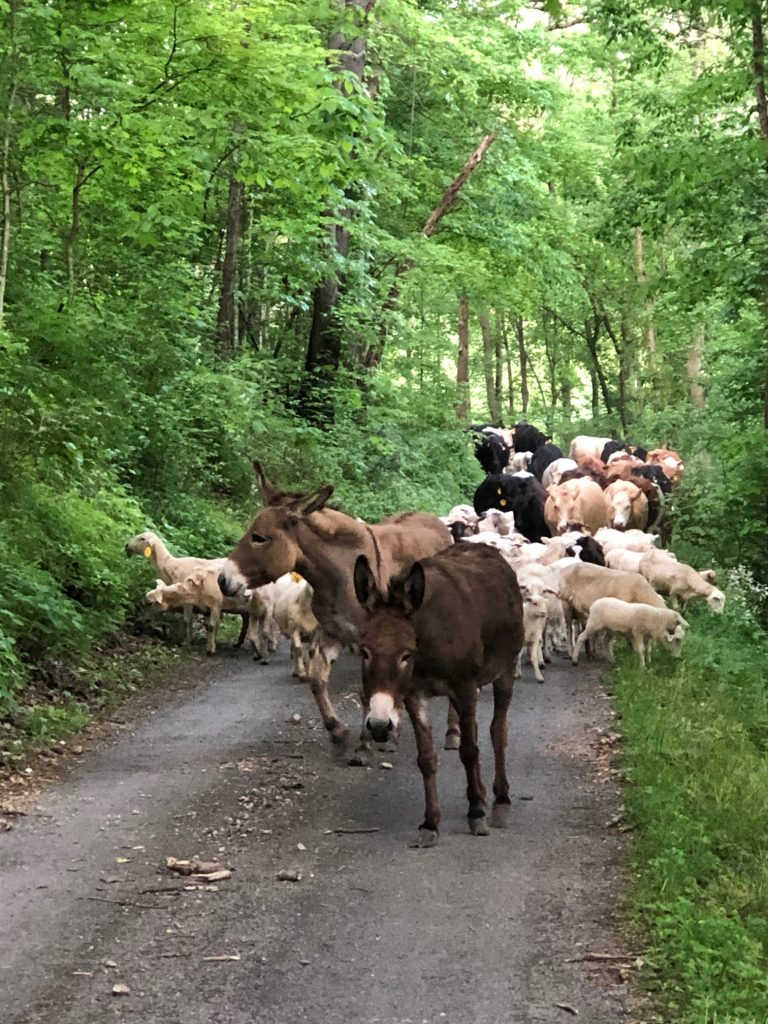Livestock
- Calmer livestock– having control of animals is a huge part of overall management.
- Reduced hay fed– a 12 paddock system vs. continuous resulted in 31% less hay fed
- Carrying capacity is increased– typically moving from a monthly rotation to a weekly rotation will increase carrying capacity by 20 to 30%
- Increased gain per acre– rotating animals in a 12 paddock system vs. continuous grazing resulted in a 37% increase in pounds of calf per acre
- Temperature reduction– vegetation compared to bare soil reduces temperature by ~ 8 degrees in summer
- Improved Wildlife Habitat– Varying the height of forage and diverse forage systems improve food and cover for wildlife. Biologist like plant diversity and plant diversity comes from soil disturbance and rest for plant recovery. In a grazing system wildlife are always the first grazers which provides the best nutrition.
Forage
- Better persistence of forages– particularly of forages sensitive to continuous grazing. In general woody plants that goats prefer require a longer rest period (~45 days).
- More weeds are consumed- some weeds are high quality
- More uniform grazing, Improved utilization- Continuous grazing typically only utilizes approximately 30- 40% of standing forage whereas rotating approximately twice a week (rotate based on forage height) improves utilization to 60 – 70%.
- Excess pasture growth harvested as hay- improves utilization even more
- Higher production– Typically due to increased stubble height, more leaf area, and more moisture conservation production can be increased by 20% over continuous close grazing.
- Better management– with proper fencing forages with different management needs are fenced facilitating improved management such as overseeding and treading in seed.
Environment
- Reduced Runoff- Improved vegetative cover has 3 times less runoff than overgrazed pasture
- Improved filtering of water– Increasing stubble height improves filtering of runoff.
- Better distribution of dung and urine– improving the environment through proper placement.
- Improved water quality– with proper fencing animals spend less time loafing in water areas and drink from selected and protected watering points. Bacteria, concentration of nutrients and soil erosion are all reduced when practicing rotational grazing.
- Streambanks are more stable– Livestock enter streams less frequently (i.e. 5 paddocks system- animals are in one paddock only 20% of the time that’s a reduction of 80%). Treading followed by rest increases plant diversity – resting allows vegetation to establish or recover. Grazing provides better plant diversity than total exclusion which long term results in only woody vegetation.
- Soil loss- Overgrazed pasture can have soil loss of 9 tons relative to 1 ton for well managed pasture.

